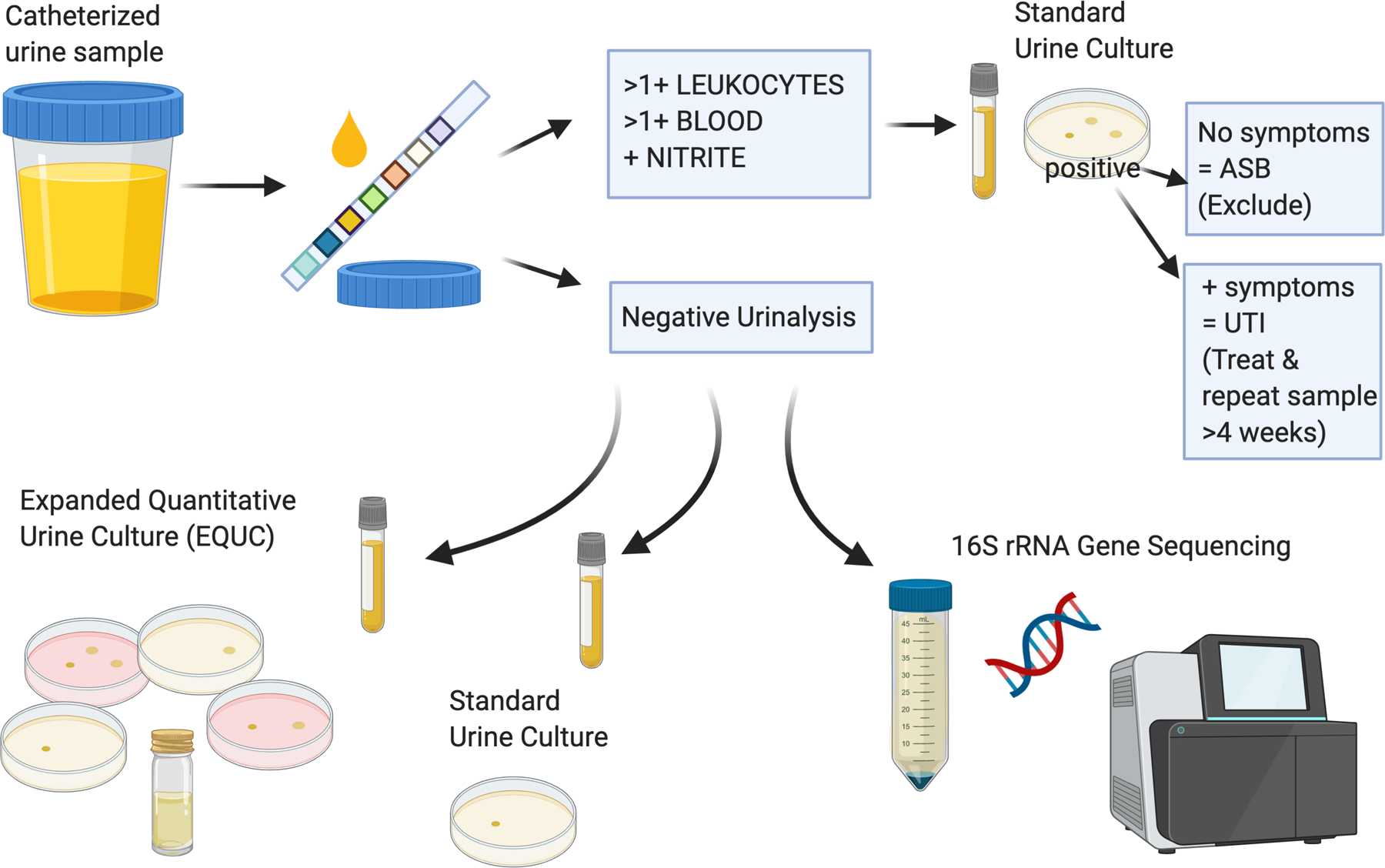Figure 1: Urine Sample Processing.

Catheterized urine was obtained using a standard research protocol. Urine was initially tested in the clinic with dipstick urinalysis (UA). If UA was suspicious for bacteruria, it was sent for standard urine culture only. If the participant had a negative (no growth) standard urine culture after suspicious UA, they were invited to provide a repeat sample. If the participant had a positive standard urine culture, the research documentation was reviewed for presence or absence of any symptoms. At this point, the participant was either: 1) excluded if there was asymptomatic bacteruria (ASB); or 2) treated for symptomatic urinary tract infection (UTI) and invited to provide a repeat sample in 4 weeks. For samples where office UA was negative, two 5mL samples were prepared and transferred to the Duke Clinical Microbiology Laboratory for standard and expanded quantitative urine culture. The remaining urine was poured into 50mL conical tubes prepared with Assay Assure, refrigerated, and transferred to the research laboratory for further processing and 16S rRNA gene sequencing. Created with BioRender.com.
